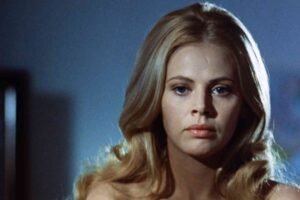Introduction
India’s cinematic journey is vast, emotional, and filled with incredible milestones. But if you have ever wondered, “Which is the first movie in India?” — this guide will answer that question in detail while offering valuable insights into the origins of Indian cinema. Through these practical tips, you will not only discover the name of India’s first movie but also understand its influence, legacy, and the lessons it offers to today’s filmmakers and movie enthusiasts.
Which Is The First Movie In India
Cinema in India is more than entertainment — it’s a cultural mirror. From silent black-and-white frames to modern-day digital films, Indian cinema reflects societal evolution. Before diving into the details, let’s establish the fact: the first full-length Indian feature film was Raja Harishchandra, released in 1913. Directed and produced by Dhundiraj Govind Phalke, popularly known as Dadasaheb Phalke, this movie laid the foundation for the massive Indian film industry we know today.
The Origin Story: How It All Began
To truly grasp the significance of Raja Harishchandra, it’s essential to understand the early 1900s film environment. The Lumière brothers introduced moving pictures to India in 1896, showing short films at Watson’s Hotel in Bombay (now Mumbai). These screenings fascinated audiences and inspired Indian artists to create something uniquely Indian.
Dadasaheb Phalke, a printing press owner by profession, was among those inspired. After watching The Life of Christ, he envisioned creating a film based on Indian mythology. His vision led to Raja Harishchandra, which told the story of a righteous king known for his truthfulness and sacrifice — a theme deeply rooted in Indian values.
Phalke’s passion for storytelling, combined with his technical curiosity, turned him into a pioneer. Without formal film education or access to advanced equipment, he taught himself cinematography and film processing through experimentation.
Practical Tips: Which Is The First Movie In India and What We Can Learn
The making of Raja Harishchandra wasn’t just a cinematic achievement — it was a lesson in creativity, resilience, and innovation. Here are some practical takeaways modern filmmakers and cinema lovers can draw from India’s first film.
Start With Passion and Vision
Phalke’s journey began with passion. Despite having no prior film experience, his belief in storytelling guided him. Today’s creators can learn that having a clear vision matters more than having every resource. Whether it’s making short films on a smartphone or producing large-scale features, passion drives success.
Embrace Innovation Over Perfection
In 1913, India lacked film equipment, studios, or trained technicians. Yet, Phalke used ingenuity to overcome every challenge. He built his own camera modifications and developed film reels manually. The lesson here is timeless — innovation is often more valuable than perfection. Filmmakers should focus on creativity over constraints.
Cultural Relevance Enhances Impact
Raja Harishchandra succeeded because it connected with the audience’s cultural roots. It wasn’t just a film; it was a reflection of Indian morals and mythology. Modern storytellers can take note — when content connects emotionally and culturally, it resonates deeper.
Consistency Builds Legacy
After the release of Raja Harishchandra, Phalke continued creating several mythological films that shaped the early Indian cinematic landscape. His consistency in storytelling helped establish Indian cinema’s foundation. Aspiring creators should understand that long-term dedication builds legacy, not one-time success.
Evolution of Indian Cinema After Raja Harishchandra
After 1913, Indian cinema evolved rapidly. Silent films dominated for nearly two decades, focusing on mythological and historical themes. Then came the sound era with Alam Ara (1931), India’s first talkie. This marked a new chapter where songs, dialogues, and emotions found voice.
The 1940s and 1950s became India’s golden film era, introducing icons like Raj Kapoor, Nargis, and Dilip Kumar. Later, regional cinemas flourished, giving rise to industries in Tamil Nadu, Bengal, and Kerala. Today, Bollywood and regional film industries collectively make India the world’s largest film producer.
The journey from Raja Harishchandra to digital blockbusters like Baahubali and RRR demonstrates how Indian cinema continues to innovate while preserving its storytelling soul.
Why Knowing “Which Is The First Movie In India” Still Matters Today
Understanding the roots of Indian cinema isn’t just academic; it’s inspirational. Knowing about Raja Harishchandra helps us appreciate the artistry, effort, and vision that built today’s thriving industry. It also emphasizes how passion can turn impossible dreams into history-making achievements.
From an educational perspective, film students, historians, and enthusiasts can study the early methods used by Dadasaheb Phalke to appreciate the craftsmanship behind film production without modern technology.
If you’re interested in exploring more cultural and entertainment insights, check out this Related Entertainment article for deeper understanding.
The Legacy of Dadasaheb Phalke
Dadasaheb Phalke is often called “The Father of Indian Cinema.” His work set the standard for generations of filmmakers. In his honor, the Dadasaheb Phalke Award was instituted in 1969, celebrating individuals for lifetime contributions to Indian cinema. The award remains India’s highest film honor, highlighting Phalke’s enduring influence.
Phalke’s story is not just about making the first movie; it’s about breaking boundaries. He transformed limitations into opportunities, inspiring countless creators to follow their dreams.
Challenges Faced During the Making of the First Indian Movie
Creating Raja Harishchandra was no easy task. In those days, there were no film studios, editing labs, or trained actors. Phalke faced resistance from society as well — acting was not considered a respectable profession. Women refused to appear in front of the camera, so male actors had to portray female roles.
Phalke’s perseverance, despite these hurdles, reflects his determination to bring his vision to life. It reminds us that innovation often begins with a single person’s courage to take risks.
Technological Transformation Since the First Film
When Raja Harishchandra was made, filmmaking required manual labor and physical film reels. Today, digital cameras, CGI, and advanced sound design have revolutionized the industry. Despite this progress, the core principles remain unchanged — storytelling, emotion, and creativity continue to define great cinema.
This evolution from celluloid to digital also mirrors India’s adaptability. From small-town filmmakers using smartphones to major studios producing global hits, Indian cinema remains versatile and forward-looking.
The Broader Impact of India’s First Movie
Raja Harishchandra wasn’t just a film — it was a movement. It encouraged more Indians to take interest in cinema as an art form. It also inspired the creation of film studios, training schools, and national awards that continue to strengthen the industry.
Today, cinema is one of India’s most influential cultural exports, contributing significantly to global entertainment and economy. Understanding where it all began helps us value how far it has come.
FAQs
What is the name of the first movie in India?
The first Indian movie is Raja Harishchandra, directed by Dadasaheb Phalke in 1913.
Who is known as the father of Indian cinema?
Dadasaheb Phalke is widely recognized as the father of Indian cinema for creating India’s first feature film.
When was the first movie released in India?
Raja Harishchandra premiered on May 3, 1913, in Mumbai (then Bombay).
What was the theme of India’s first movie?
It depicted the mythological story of King Harishchandra, who stood for truth and righteousness.
Why is the first movie in India still important today?
It marks the birth of Indian cinema, inspiring generations of filmmakers and preserving cultural heritage.
If you want to explore more fascinating topics related to Indian film culture, visit Which Is The First Movie In India.
Raja Harishchandra wasn’t just the beginning of cinema in India; it was the beginning of a cultural revolution. The film’s success paved the way for millions of stories, directors, and dreamers who followed.
Understanding Which Is The First Movie In India reminds us that every great journey begins with a single, bold step. Dadasaheb Phalke’s pioneering spirit continues to inspire today’s creators, proving that imagination, determination, and faith in one’s vision can truly change history.
If you’re passionate about learning how creativity shapes culture and technology, Learn more about storytelling, innovation, and the evolution of visual art. Cinema began as an experiment but became a legacy — a legacy that continues to grow with every frame shot and every story told.



